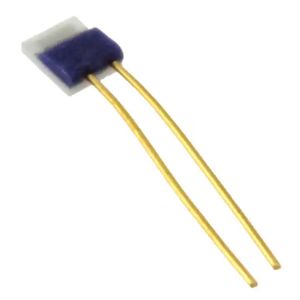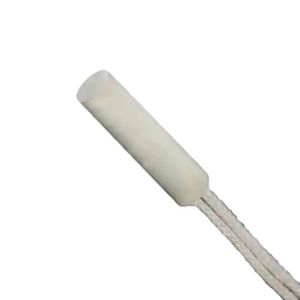
Temperature Sensors - RTD (Resistance Temperature Detector)
Temperature Sensors - RTD (Resistance Temperature Detector)
Definition:
Resistance Temperature Detectors (RTDs) are precision temperature sensors that measure temperature by correlating the resistance of the RTD element with temperature. RTDs are known for their high accuracy, stability, and repeatability, making them ideal for industrial, laboratory, and process control applications where precise temperature monitoring is critical. The most common RTD type is the platinum RTD (PT100 or PT1000), which offers excellent linearity over a wide temperature range.
Types of RTD Temperature Sensors:
1. Wire-Wound RTDs: Features a coil of wire wrapped around a ceramic or glass core, providing high accuracy and durability.
2. Thin-Film RTDs: Constructed by depositing a thin layer of platinum on a ceramic substrate, offering a compact design and cost-effective performance.
3. Probe-Style RTDs: Designed for direct immersion in liquids, gases, or solids, available in various sheath materials (stainless steel, Inconel) for harsh environments.
4. Surface-Mount RTDs: Used for measuring the temperature of flat surfaces, commonly applied in HVAC and electronics.
5. Flexible RTDs: Built with bendable elements for applications requiring conformability to irregular surfaces.
Buying Recommendations:
- Accuracy & Calibration: Choose RTDs with appropriate tolerance classes (e.g., Class A, B) based on your precision requirements.
- Temperature Range: Ensure the RTD covers your operational range (typically -200 C to +850 C for platinum RTDs).
- Construction Material: Select sheath and wiring materials (e.g., stainless steel, Teflon) compatible with your environment (corrosive, high-pressure, etc.).
- Output & Compatibility: Verify if the sensor integrates with your system (2-wire, 3-wire, or 4-wire configurations for minimized lead resistance errors).
- Certifications: Look for industry-standard certifications (IEC 60751, ASTM E1137) for guaranteed performance.
RTD temperature sensors are a reliable choice for applications demanding long-term stability and precision. Evaluate your technical needs and environmental conditions to select the optimal RTD type.
Filter and sort
Categories
HEL-717-U-1-12-00
SENSOR RTD 1KOHM 0.2% PROBE
32207638-4K
SENSOR RTD 1KOHM SMD 0603
PPG102HB
SENSOR RTD 1K OHM CLASS B
SA10101553
100/385/B F3X6 CERAMIC TUBE(NI W
32207605-4K
SENSOR RTD 100OHM SMD 0805
HRTS-5760-B-T-1-12
SENSOR RTD 100OHM 0.1% PROBE
SA10161531
100/385/A F3X6 CERAMIC TUBE(NI W
PPG501A1
SENSOR RTD 500OHM 0.06% RADIAL
NB-PTCO-191
SENSOR RTD 1KOHM 0.001% 2SIP
TD4A
SENSOR RTD 1.85KOHM CYLINDER
PPG101B1
SENSOR RTD 100OHM 0.12% RADIAL
SA50160527
500/385/A 2X3 CHIP SENSOR(NI WIR
ZNI1000TC
SENSOR RTD 1KOHM 5% TO236-3
PPG102B2
SENSOR RTD 1KOHM 0.12% 2SIP
TD5A
SENSOR RTD 1.85KOHM RAD 3 LEAD
PTS1206M1B1K00P500
PTS 1206-B AT P5 1K0
PPG101A1
SENSOR RTD 100OHM 0.06% RADIAL
NB-PTCO-321
SENSOR RTD 1KOHM 0.12% 1206
SA10160543
100/385/A 1.7X2.8 CHIP SENSOR(NI
PTS1206M2B100RP500
PTS 1206-2B AT P5 100R




















